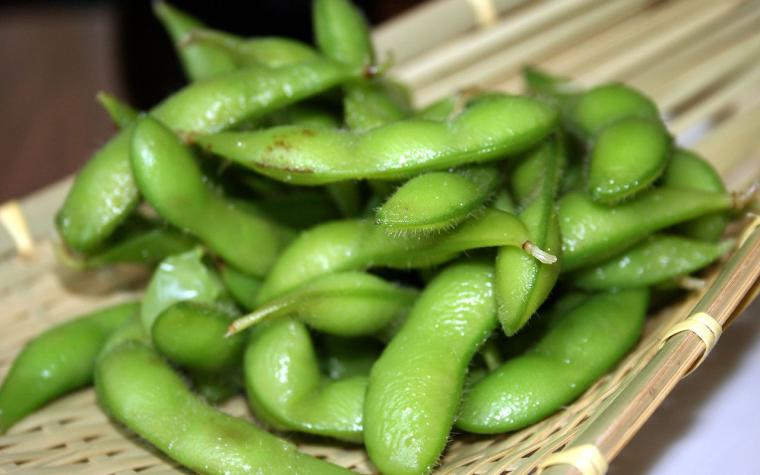COLUMBIA, Mo. – You may have seen edamame in grocery stores or on salad bars and not known what it is, says Todd Higgins, University of Missouri Extension specialist in horticulture.
Edamame is a type of soybean grown for direct consumption by people. Edamame (pronounced eh-duh-mah-may) translates from Japanese as “beans on a branch” since they are often sold with the pod still attached to the stem.
Edamame is harvested early, before it hardens into the yellow-whitish bean associated with Missouri soybean. Its sweet, nutty taste makes it a staple of East Asian dishes, now growing in popularity in the United States.
Soybean is a big part of Missouri’s agricultural economy; the state ranks seventh in U.S. soybean production. Carroll County in northwestern Missouri claims to produce more soybean per capita than anywhere in the world, says Higgins.
Not all soybean are edible. Most are grown for their oil, and the meal left after the oil is removed is used for livestock feed.
Easy to grow
Edamame soybean grows much like oilseed soybean and is easy to grow in the home garden. Sow them the same way you would sow green beans or peas. Wait until the soil warms to at least 60 degrees Fahrenheit, usually late April to early May, depending on the year and where you live in Missouri, says Higgins.
“But don’t rush out to plant edamame when you see farmers planting corn and soybeans,” says Higgins. “Farm seed is often treated to withstand lower soil temperatures. Edamame is not treated, so it won’t tolerate cooler soil temperatures.”
A good guide for soil temperatures is the Missouri Commercial Agriculture Weather Network, which gives 2-inch soil temperatures by area and date, says Higgins. Check soil temperatures in your area.
Plant like you would beans or peas
Plant the edamame seeds 1 to 1 ½ inches deep and 2-4 inches apart in the row. Cover the seed with soil, and firm the soil around the seed. Apply an inoculum to the edamame seed to enable it to use atmospheric nitrogen as a fertilizer.
Blanch and eat
Harvest edamame when the pods are plump and the soybeans in the pod are nearly touching. Edamame pods can be eaten or the beans shelled. Either way, blanch edamame before eating, says Higgins.
Low carb, high protein
A 1-cup serving of this legume supplies 34% of the recommended daily amount of protein. However, like many other seeds, it is not a low-fat food. A 1-cup serving has 8 grams of fat, or 12% of the recommended daily amount. If you are looking to increase fiber in your diet, edamame is an excellent choice, with a 1 cup serving supplying 32% of the recommended daily intake of fiber.
Practice succession sowing
For a continuous supply of edamame throughout the growing season, plant every 7-14 days up to mid-July, depending on location.
“If the farmers in your region of Missouri plant soybean after wheat harvest, then you can plant edamame for at least two weeks past wheat harvest,” Higgins says. “As the season progresses past early June, you may need to sow more seed to maintain your production levels of edamame.”
Not all seed suppliers carry edamame seed, so you might have to buy edamame from a mail-order seed house, says Higgins. “Planting two different varieties of edamame increases your chances of getting an early crop of great-tasting and nutritious edamame. If you are looking for something new to try in your garden this year, consider edamame.”
For a recipe for edamame and corn succotash, see the MU Extension publication “A Taste of Missouri.”. Find a recipe for spicy edamame in “The Soy of Cooking.”
Photo
Edamame pods
Edamame pods. Photo by Tammy Green (aka Zesmerelda). Shared under a Creative Commons license (CC BY-SA 3.0) via Wikimedia Commons.
